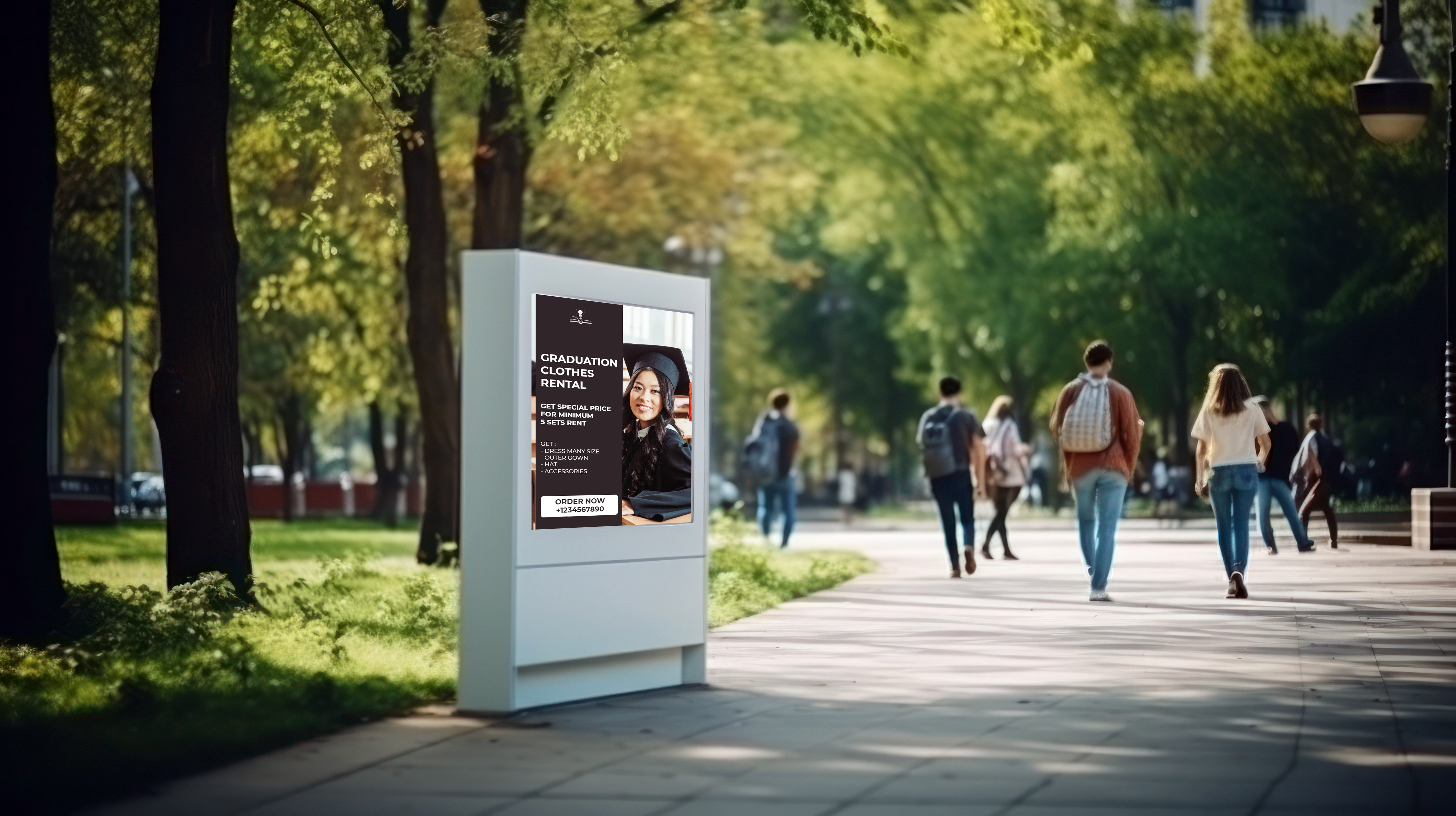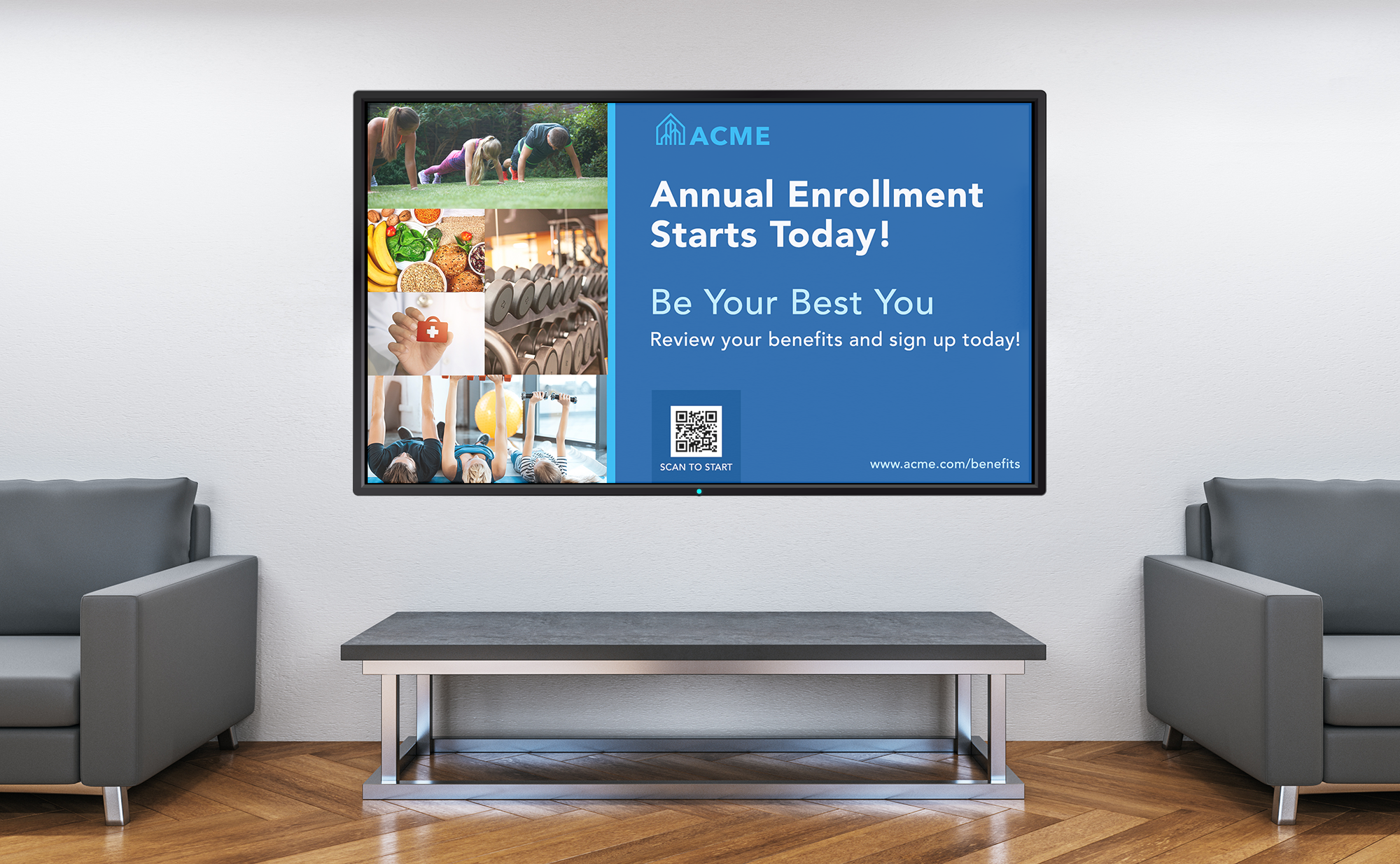By Guy Serwin

Today we live in a world where information is instantly at our fingertips. Whether we need directions, event updates, or important announcements, digital signage has become an integral part of our daily lives, especially on college campuses. However, as we embrace the convenience and efficiency of digital signage, we must also prioritize accessibility to ensure that everyone, regardless of their abilities, can benefit from this technology. Let’s explore the significance of accessibility in digital signage on campus and how universities can work towards ensuring inclusivity for all.
Understanding the Importance of Accessibility
Before diving into the specifics of creating accessible digital signage, let’s take a moment to understand why it’s so crucial. Accessibility isn’t just a legal requirement; it’s a moral and ethical obligation. It ensures that individuals with disabilities can access information and services just like anyone else. When colleges and universities prioritize accessibility, they create an environment that is more equitable and welcoming to all.
Legal Requirements and Compliance
One of the primary reasons institutions must focus on accessibility in digital signage is to comply with legal regulations. Laws such as the Americans with Disabilities Act (ADA) in the United States mandate that public entities, including educational institutions, provide accessible communication to people with disabilities. Failure to meet these requirements can lead to legal consequences, including fines and lawsuits.
The Impact of Inaccessible Signage
Inaccessible digital signage can have a significant impact on campus life. Imagine a student with visual impairments trying to navigate the campus but unable to access important directional information displayed on digital signs. Or a deaf student missing out on critical announcements because the signage lacks captions or sign language interpretation. These scenarios highlight the real-life consequences of inaccessible signage.
Key Elements of Accessible Digital Signage
Now that we’ve established the importance of accessibility in digital signage, let’s delve into the key elements that make signage inclusive for everyone:
1. Captioning for Video Content
If your digital signage displays videos, it’s essential to provide captions. Captions not only benefit deaf and hard-of-hearing individuals but also improve comprehension for those who may have difficulty with audio.
2. Clear and Readable Fonts
Choosing clear and readable fonts ensures that the text displayed on digital signage is legible for everyone. Avoid decorative fonts and opt for styles that are easy to read, even from a distance.
3. Adequate Contrast
Maintaining a high contrast between text and background colors enhances visibility. This is particularly important for individuals with low vision or color blindness.
4. Consistent Layout and Navigation
Consistency in layout and navigation helps users predict where to find information on digital signage. Consider the logical flow of content and maintain it throughout your signage.
5. Tactile and Braille Options
For physical digital signage, such as maps or directories, incorporating tactile and Braille options ensures that individuals with visual impairments can access the information.
6. User Testing and Feedback
Before finalizing your digital signage, conduct user testing with individuals with various disabilities. Their feedback can provide valuable insights into improving accessibility.
Technology Solutions for Accessibility
Advancements in technology have made it easier than ever to create accessible digital signage. Here are some technological solutions to consider:
1. Screen Reader Compatibility
Ensure that your digital signage software is compatible with screen readers, allowing visually impaired users to access the content seamlessly.
2. Automatic Transcription Services
Utilize automatic transcription services to generate captions for video content in real-time, making your signage more inclusive.
3. Responsive Design
Design digital signage that adapts to different screen sizes and orientations, accommodating users with various devices, including smartphones and tablets.
Embracing Inclusivity: A Digital Signage Imperative

Accessibility in digital signage is not just a nice-to-have feature but a necessity for creating an inclusive campus environment. By adhering to legal requirements, implementing key accessibility elements, and embracing technology solutions, colleges and universities can ensure that their digital signage serves the needs of all students, faculty, staff, and visitors. Prioritizing accessibility is a step towards a more inclusive and equitable educational experience for everyone on campus.
Ready to Make Your Campus Inclusive?
Don’t wait – take the first step towards accessible digital signage today! Contact our solutions experts to learn how to implement inclusivity in your campus signage system. Your commitment to accessibility will create a more welcoming environment for all.









